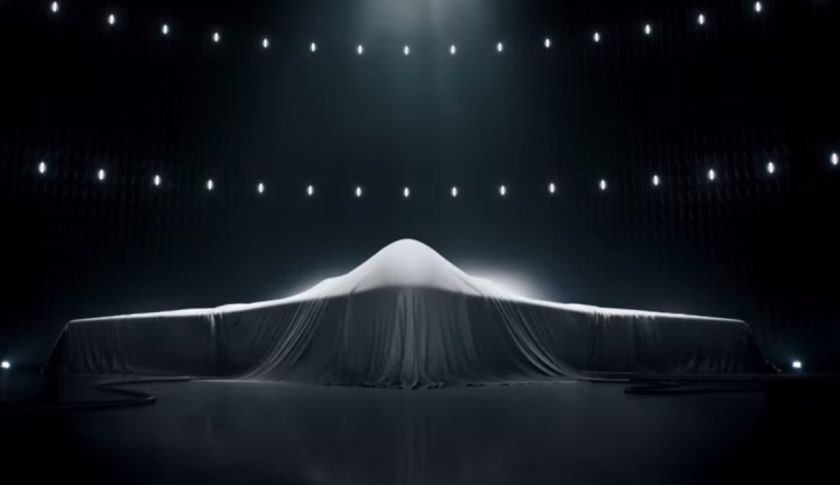This post was first published at Chuck Spinney’s personal blog, The Blaster, and this adapted version appears here with the permission of the author.
The Pentagon just won another small skirmish in its long war with Social Security and Medicare. That is the unstated message of the budget deal announced gleefully last week by congressional leaders and the president. To understand why, let’s take a quick trip down memory lane.
Last January, President Obama submitted his Fiscal Year (FY) 2016 budget to Congress, and he proposed to break the spending limits on both defense and domestic programs. These limits are set by the long-term sequester provisions of the Budget Control Act of 2011, which, for better or worse, is the law of the land. Obama was asking Congress to change the law – he wanted to finance his ramped-up spending proposals by increasing taxes.
Of course, the president knew that the Republican-controlled Congress lusted for defense increases but hated domestic spending, particularly entitlements. Moreover, he knew increasing taxes was like waving the red cape in front of the Republican budget bulls. So he knew his budget would be dead on arrival. Obama’s budget, nevertheless, had one virtue: it was upfront about the intractable nature of the budget problem. In effect, whether deliberately or not, Obama laid a trap that the Republicans merrily walked into during the ensuing spring and summer.
Obama’s gambit set into motion a tortured kabuki dance in the Republican-controlled Congress. The Republicans, as Obama well knew, wanted to keep up the appearances of adhering to the Budget Control Act. But at the same time, they wanted desperately to shovel money into the Pentagon’s coffers. The net result was that Obama’s proposal triggered a series of increasingly irrational congressional negotiations, bizarre backroom deals and weird budget resolutions. These machinations came to a head with the passage of a National Defense Authorization Act that proposed to (a) keep the Pentagon’s base budget at the Budget Control Act level of about $499 billion, but (2) pack the accounts in the Pentagon’s Overseas Contingencies Operations fund (OCO) with programs and pork that should have been in its base budget.
The reason for this dodgy “slush fund” approach rested in the politically irresistible fact that the OCO is a separate war-fighting fund** for the Pentagon that is exempt from the spending limits set by the Budget Control Act’s sequester provisions. The net result of this smoke-and-mirrors exercise by the Budget and Armed Services Committees was a defense budget almost identical to Obama’s original submission, but not accompanied by the president’s domestic funding or tax increases. And this new monstrosity was all wrapped up in the ridiculous pretense of adhering to the spending limits of the Budget Control Act.
Last week, President Obama seemed to close the trap by vetoing their proposal. But this too was smoke and mirrors – he had some budget tricks of his own up his sleeve.
The veto put in motion yet another kabuki dance, this time behind closed doors at the White House and Congress. This likely was the negotiation the president wanted all along. The goal was to reach an overall budget deal that would avoid a government shutdown, for which the majority Republicans didn’t want to be blamed on the eve of an election year. At the same time, they wanted to dodge the Budget Control Act’s sequester bullet while they shoveled more money into the Pentagon.
That deal has now been made, and the Republic has been saved, albeit at an unknown price. Nevertheless, some of the sordid details are now beginning to seep through the chinks in the Hall of Mirrors that is Versailles on the Potomac. A report in Defense News lays out some of the elements.
The deal raises the sequester spending caps (again) by $80 billion over next two years – $50 billion in fiscal year 2016 and $30 billion in fiscal year 2017. It also increases the federal government’s debt limit. These spending increases would be split equally between defense and domestic programs, and they would be financed by two squirrelly provisions.
The first financing gimmick cuts back Medicare and Social Security disability benefits. But if past is prologue, the cut to Medicare is likely to be reversed again next year — because everyone in Congress wants the endorsement of the American Medical Association in an election year. Since 1997, the year the cut to Medicare providers was first made permanent law by the Balanced Budget Act, Congress has reversed the scheduled cut 17 times – the so-called “doc fix.”
The second financing gimmick is to sell crude oil from the US Strategic Petroleum Reserve. This rather bizarre provision is peculiarly fitting to the culture of Washington. Few remember that the reserve was justified to the American people in 1975 as an insurance “cushion” to reduce the adverse effects of future rises in oil prices or supply disruptions engineered by OPEC, which is controlled by our supposed ally Saudi Arabia. So why sell the reserve’s oil, when prices are near record lows (adjusted for inflation) compared with the last 15 to 20 years – particularly since the Saudis are flooding the market to take out the US frackers?
Who benefits from this scenario is a fascinating question with all sorts of twists and turns and is not yet answered. But it is worth recalling the 1997 Balanced Budget Act had a provision to sell the Naval Petroleum Reserve at Elk Hills. Sold in 1998, the Elk Hills reserve was, at that time, the largest privatization of government assets in history, precisely when oil prices were at their lowest level (adjusted for inflation) since the 1960s. The government sold it to Occidental Petroleum, which made a killing.
One thing the deal is clear about, however, is how the Pentagon benefits. Its share of the spending increases would be $33 billion in fiscal year 2016, made up of a $25 billion increase in the Pentagon’s base budget and an $8 billion increase in the OCO slush fund. As for how the Pentagon’s $15 billion increase in fiscal year 2017 will be allocated, the report in Defense News is silent.
No doubt champagne corks are popping in the halls of the Military-Industrial-Congressional Complex (MICC) and its lobbying affiliates on K Street. Indeed, to celebrate the triumph, the Air Force immediately announced it had awarded Northrop-Grumman a huge concurrent engineering contract (Milestone B) to design and build the first 21 of 100 new long-range strike bombers, which had previously been shrouded in heavy secrecy. No one knows what this bomber will even look like, let alone what the program will cost, but two years ago there were reports of a “pre-cost-growth” total program cost estimate (R&D and production) reaching $81 billion. At least one of the MICC’s euphoric wholly-owned subsidiaries in the Fourth Estate has already written that 100 bombers is not enough, given the threats we face and the number of aging bombers that need to be replaced.

A Northrop Grumman ad aired during the Super Bowl teased at the defense contractor’s design for the Air Forces Long-Range Strike Bomber program. Courtesy of Northrop Grumman/YouTube via Forbes
This new bomber program is by far the largest weapon acquisition program yet begun in the 21st Century. Yet there has been no oversight, except by its advocates in the smoke-filled, super-secret Secure Compartmented Information Facilities (SCIFs) spread around Washington. Moreover, the bomber’s heavy concurrency means the production-related money will quickly start flowing to hundreds of congressional districts, well before it is designed. So, before you can say “sequester” next year, the Bomber, like the troubled F-35 Joint Strike Fighter, will be unstoppable. And like the F-35, it will acquire a life of its own, no matter how badly it fails to meet its cost goals, its capability specifications or its production quotas — for the simple but powerful reason that a majority in Congress are being bought off today in a way that ensures they vote for it tomorrow.
But there is more. The new Bomber is just the beginning of a new defense boom that the president and Congress are launching. The Pentagon already has a bow wave*** of increased spending for new weapons in its R&D pipeline. In that sense, it is no accident that a year ago, as he was departing the Pentagon, its ineffectual comptroller Robert Hale characterized the new bomber as the “canary in the coal mine.” He was wringing his hands over the rapidly growing requirements for larger defense budgets in the future — requirements he helped to create.
I first heard the term “bow wave” in 1973. They are a perennial feature in Pentagon planning. The current bow wave, like its predecessors, will lead inexorably to more budget crises and more dodgy budget deals made by the best government money can buy.
In short, President Obama had a shot at leading from the moral high ground, and once again, he blew it. He had the Republicans on the ropes, with all their warts on full display, but then he squandered an opportunity to effect even a pretense of challenging a thoroughly corrupt system.
[Addendum: By 4 November, the newsletter Flight Global explained why the champagne corks were popping within the MICC and its lobbyists, saying …
“The anticipated two-year budget deal has investors feeling optimistic, since the alternatives were a full-year continuing resolution that maintains fiscal year 2015 government spending levels or full sequestration. In response, Moody changed its outlook for the global aerospace and defence industry from stable to positive, with worldwide defence spending now tipped to grow by 2% to 3%.” ]
Obama’s most recent performance is yet more proof that he is no change agent. A better characterization would be that he is merely another apparatchik, whose role is to protect the interests of the factions making up the shadow government that is now running the show — what former congressional staffer Mike Lofgren calls the Deep State.****
The views expressed in this post are the author’s alone, and presented here to offer a variety of perspectives to our readers.
Watch Bill’s 2003 interview with Franklin “Chuck” Spinney
——————
* This essay is the second in a series of occasional essays on the nature of defense spending. The first can be found at The Blaster Blog.
** The OCO is a George W. Bush gimmick, created in 2001 after 9-11 to capitalize on the national hysteria to pay for the Global War on Terror by taking its costs off the books. All our previous wars — e.g., WWI, WWII, Korea, Viet Nam, Kosovo — were funded out of the “base” defense budget and there was no need set up a special war fighting account.
*** The term “bow wave” refers to a buildup of budget requirements in the future that is created by investment decisions made today. It is a chronic feature of defense planning and is created deliberately by the bureaucratic gaming strategies explained in Part III of my 1990 pamphlet Defense Power Games. The bow wave of rising investment requirements sets up the conditions for a continual budget crisis that creates increasing pressure to raise defense spending over the long term. These pressures have nothing to do with any external threats facing the United States.
**** Lofgren a former Republican congressional staffer on the House and Senate Budget Committees has written an important new book, The Deep State: The Fall of the Constitution and the Rise of a Shadow Government. It will hit the stands next January.


